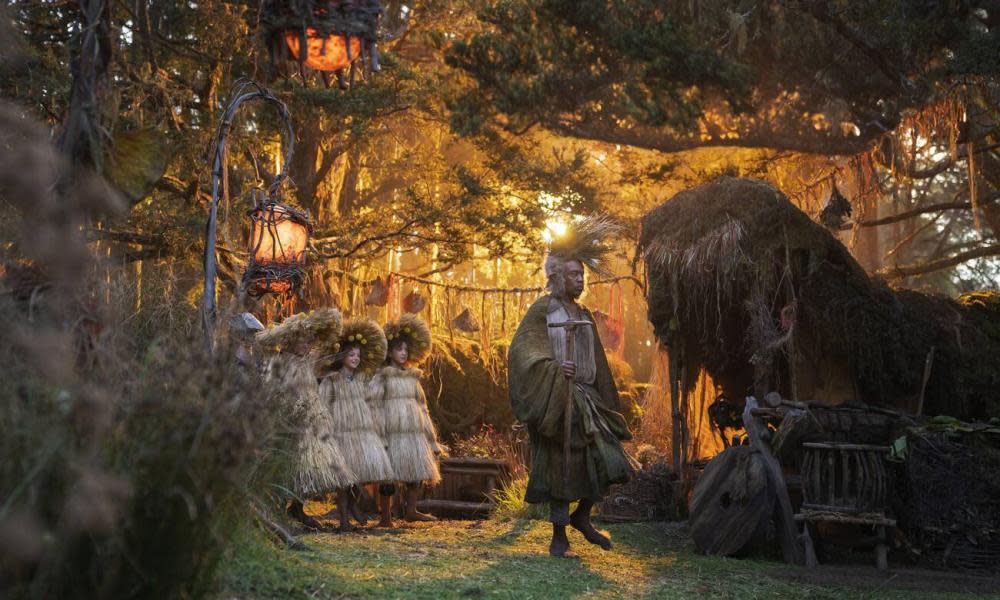Now we’re Tolkien! After six glacial hours, The Rings of Power is finally worth watching

Whether you’re a Tolkien obsessive or the sort of dabbler who doesn’t give an Ent’s conker what a Silmarillion is, it’s not hard to see why reactions to The Rings of Power have been … mixed.
There’s a scene in The Return of the King where Pippin is staring across the calm, still mists of Pelennor Fields, waiting for Sauron’s orc armies to lay siege to the city of Minas Tirith. “It’s so quiet,” he says. “It’s the deep breath,” says Gandalf, “before the plunge.” That’s how Amazon’s bazillion-dollar take on Tolkien felt for its first five episodes. A buildup – albeit an astonishingly bonny one – to something big, gripping and hugely exciting that was yet to happen.
The Rings of Power had – let’s just come out and say it – been quite slow. Glacial, even. Its pacing could charitably be described as “stately”. But with episode six, the thing we’ve all been waiting for finally happened. Not only that, it was probably the best hour-and-a-bit of big-budget TV since Battle of the Bastards in Game of Thrones. And by Sméagol’s loincloth did The Rings of Power need it.
A show whose first season alone cost Amazon almost £400m, based on an IP adored by so many and so intensely for so long, was always going to attract opprobrium. (This doesn’t refer to those grammarless whinges about how the presence of dragons, wizards and sentient trees in a fantasy world is fine, but people of colour stretch credulity too far. These comments will henceforth be given all the attention they deserve – none.) Critics pointed to the plot, or the void into which someone might have considered putting a plot. There was no quest. No tangible baddie. Zero comedic relief. Few characters to root for. The show’s almost defiant insistence on doing nothing to keep viewers unfamiliar with the intricacies of Tolkien’s appendices hooked – not helped by episodes coming in at well over an hour apiece.
Mainly though, it was the “B” word: for all the millions spent on it, the best efforts of a superb cast, the technical artistry present in every single profligate frame, it was … boring. A skirmish with a cave troll, a ballyhoo with a warg, a few orc dismemberments, a scary scene in an abandoned house and a chain-gang brawl down a big hole aside, it quickly became apparent that, most of the time, what you were getting were scenes in which characters rallied ripe and portentous dialogue, usually near a pretty tree.
It was a misplaced assumption that Tolkien’s world would be enough to keep viewers enthralled. And for some Tolkien enthusiasts, it probably would. But these were often the same folks irked, even repelled, by the show’s creative licence with lore, and characters such as Galadriel, whose warrior-badassery sat (in the eyes of some) firmly at odds with the more cerebral, Cate Blanchetty iteration from the books and Peter Jackson’s films. Conversely, many viewers will have been put off by the show’s indifference to brevity. It was starting to feel like The Rings of Power could turn out to be the most expensive failure since someone said: “Kwasi, we need a quick mini-budget.”
Related: ‘Like it was lit with a single tea light for a bet’: House of the Dragon has a terrible problem
And then on Friday, everything came together in spectacular fashion. This was The Lord of the Rings as we knew it: staggering scale, incredible tension, hackle-raising horse charges, grimy one-on-one slug-outs (Arondir’s superb fight with that super-ripped orc surpassed even Aragon v Lurtz from the end of The Fellowship of the Ring), acrobatic elven combat and electrifying scenes such as Galadriel’s interrogation of Joseph Mawle’s elf turned bad, Adar. Episode six had it all.
It was sensational telly – some of the best of the year so far. The romance between Arondir and Bronwyn was finally interesting. Theo’s secrecy about hoarding evil relics was much less annoying. The family drama between Isildur and Elendil mattered. Here was an episode that Tolkien fans and casuals could finally enjoy equally, which made the groundwork the show had painstakingly – some might say interminably – laid for six hours feel worth it, bringing with it true and meaningful stakes that any story involving characters you know survive for another 2,000 years is in danger of lacking.
It was the long-overdue reward faithful viewers needed. A vindication for all that invested time. We have Mordor, we know Sauron is skulking about, the Stranger could be friend or foe, as could Halbrand. Galadriel is a loose cannon. Skulduggery is afoot with the dwarves. The shadow of all-out war now looms. It feels like a show revived, and all it took was a colossally expensive exploding mountain.
Though it is fanciful to expect an episode like this each week, anyone who gave up before episode six surely now needs to reconsider that position. The prologue is finally over. Even if the last episodes of the season are only half as good as this, House of the Dragon can no longer claim to be the only top-drawer, big-budget fantasy show around. The Rings of Power took its sweet time, but it got there in the end.

 Yahoo Movies
Yahoo Movies 
